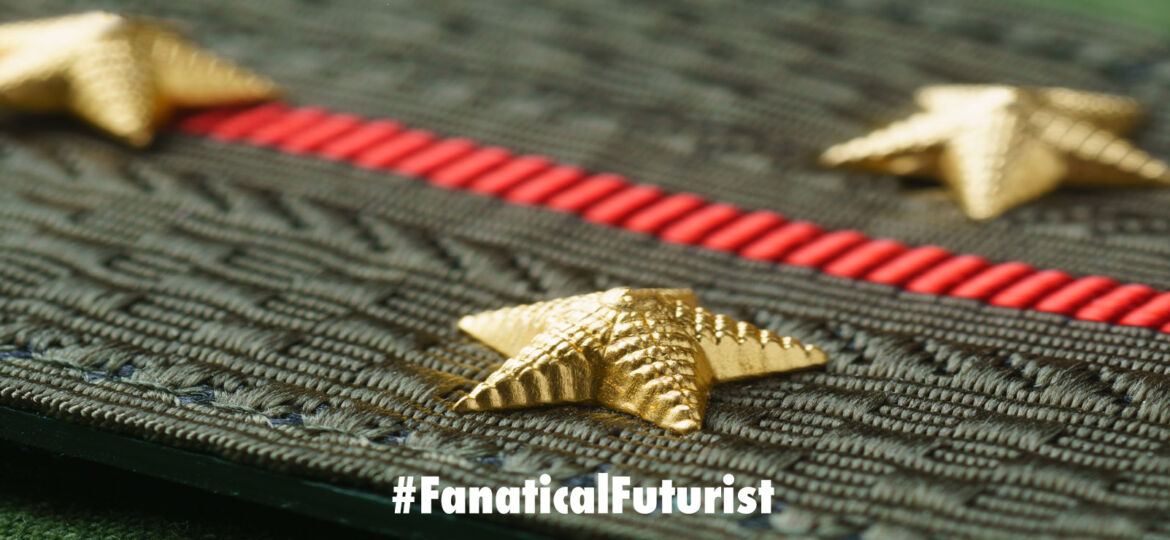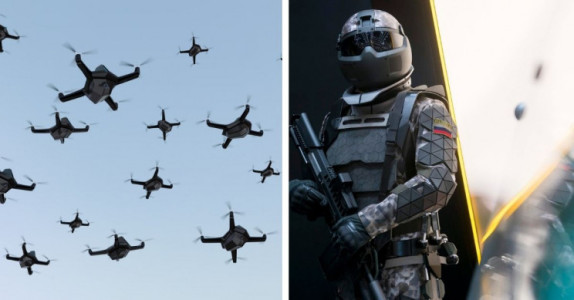
WHY THIS MATTERS IN BRIEF
As technologies continue to mature and miniaturise we’re reaching the point where we can embed AI and compute into clothing and use our minds to control swarms of drones.
 Interested in the Exponential Future? Join our XPotential Community, future proof yourself with courses from our XPotential Academy, connect, watch a keynote, or browse my blog.
Interested in the Exponential Future? Join our XPotential Community, future proof yourself with courses from our XPotential Academy, connect, watch a keynote, or browse my blog.
When most people think about getting a new suit they think about popping down to the local Macy’s or Marks and Spencers. But in Russia new suits come with a twist after Russia’s military announced their next generation soldier suits, which feel more like something out of a video game than reality, will have the ability to integrate and control small size hunter-killer drone swarms, like these ones from the UK’s Ministry of Defence that can blow off doors, robots, and even other exoskeletons.
The equipment will be developed to enhance the situational awareness of each individual soldier, improve combat performance and efficiency, and reduce the risk to life on the battlefield. And one day it’s likely it, and all of its functions will be able to be controlled using nothing more than the soldiers thoughts, like this exoskeleton I showed off recently.
Courtesy: Rostec
In a report by Rossiiskaya Gazeta, via AsiaTimes, Russia’s General of the Army Oleg Salyukov stated that “one of the current R&D projects, being carried out at the request of the ground forces’ command, envisages the creation of a new generation combat gear incorporating elements that enhance the personnel’s physical abilities.”
These incorporations include “combat and special exoskeletons, and the integration of combat and support robots as well as reconnaissance and attack drones of small and mini-class,” Salyukov continued.
As TASS recently reported, the Russian military and technology firm Rostec explained that the next-generation combat gear ‘Sotnik’, in development by one of its affiliates — the Central Scientific-Research Institute for Precision Machine Engineering TasNIItochMash — will incorporate micro-drones linked to a tactical level automated command system.
R&D for the next-generation of combat gear, which will eventually replace the current ‘Ratnik’ (Warrior) armor, is predicted to last from 2020 to 2023.
Aside from being 20 percent lighter than the ‘Ratnik’ gear, images from the micro-drones’ cameras will also be projected straight to the soldier’s helmet visor or protective glasses, alongside commands and maps of the terrain.
It is also expected that the Sotnik combat gear will consist of landmine-proof boots, a special thermal suit that makes the soldier invisible to infrared sensors, and an antiradar suit, TASS writes.
“The work on next-generation gear is continuing. We have a sufficient R&D reserve for this,” Rostec corporation official Sergei Abramov told research group The Jamestown Foundation.
“Possibly, there will be some robotised systems integrating artificial intelligence with human capabilities. Research is in progress into using powered exoskeletons, micro-drones, and new weapons,” he continued.
Perhaps most impressively of all, according to the announcement, will be the use of a Chromogenic Electroactive Material which will let the new suits change colour to blend in with the mission location’s terrain. Yet another development that feels more science fiction than reality …




















